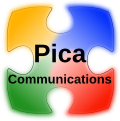
A Complex Benefit Matrix
SA benefits are difficult to understand, poorly described, and often over-sold
SA benefits are so complex that it takes a three-dimensional matrix to describe them. The PDF file that Microsoft gives customers has various benefits down the left column and various licensing programs along the top. Customers need to hover their mouse over the intersecting cells to view a pop-up that explains any given benefit in more detail.
It's a clever design, but it also illustrates that the benefits are much more complex than first meets the eye. Even Microsoft can't keep them straight—two important documents (which both have legal weight, since they are mentioned in volume licensing contracts), the Product Use Rights Document and the Product List, each have a list of SA benefits, but the lists are slightly different.
Microsoft's sales literature typically glosses over critical nuances of SA benefits. It often lists all of the benefits, even those that don't apply to a product or that are available only under restricted circumstances. For example, a few benefits are available only if a customer has something called Software Assurance Membership (SAM). SAM, which applies primarily to the Select program, requires that a customer purchase SA for every product in a category, such as all desktop applications or all servers. Customers who don't look that deeply into the benefits could be surprised by fine print that informs them they're not buying SA on enough products to qualify for certain benefits.
Other benefits are contingent on maintaining SA, which means that if a customer begins to depend on a benefit, they can't easily drop SA, even when it may offer no other benefits the customer may value. The Home Use Program, for example, may get you an apparently cheap Office license, but it's neither cheap (if you add the cost of SA) or a license, since if you stop paying for SA on Office, you need to stop using the Home Use Program copy of Office.
Making the matrix more complicated is that some benefits are not accessible outside of SA and therefore have no reference price that customers can use to compute their actual value. Nevertheless, customers should do the math and try to quantify every benefit, whose value in some cases is absurdly low.
The prime example is the SA tech support benefit for Office. For every $200,000 you spend on SA for Office, you get one tech support incident. What does a tech support incident on Office cost if you don't have SA? $99.
Microsoft is also fond of talking about the 24x7 tech support customers get with SA. However, it's not what many customers would consider 24x7. Customers can call in an incident 24x7, but they'll only get to talk to a support engineer during business hours (6 a.m. to 6 p.m. Pacific time in the Americas, for example).
The reality is that only a few SA benefits prove genuinely worthwhile under close scrutiny. I'd name product version upgrades and desktop virtualization rights as valuable enough to justify purchases of SA under the right conditions, but most other rights are either rarely used or can be obtained at lower cost some other way. Most other rights can be justified only if customers take advantage of several of them, and since few customers use more than two or three of about a dozen available SA benefits, it can be difficult to come up with a compelling argument for SA in the absence of certainty about an upgrade.
